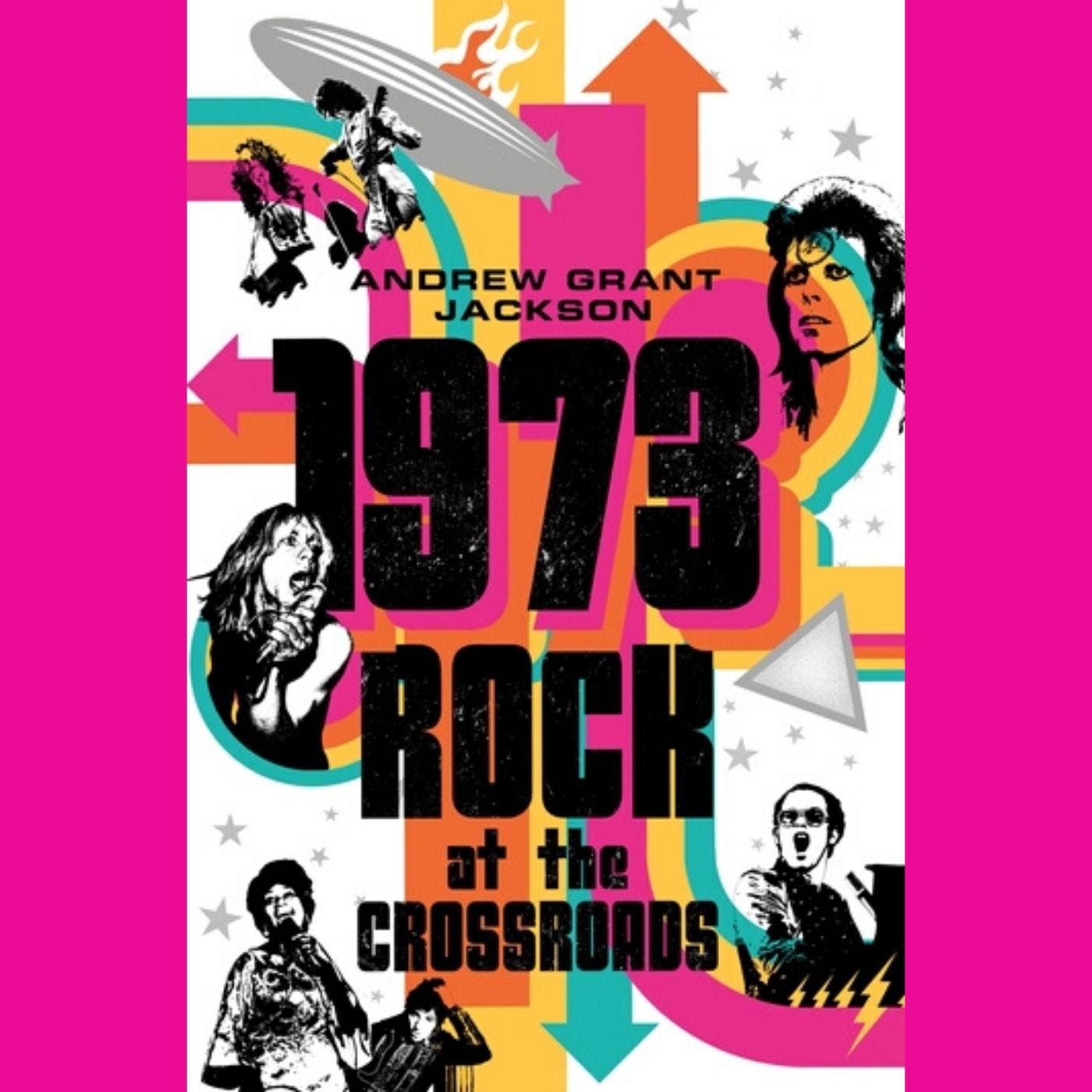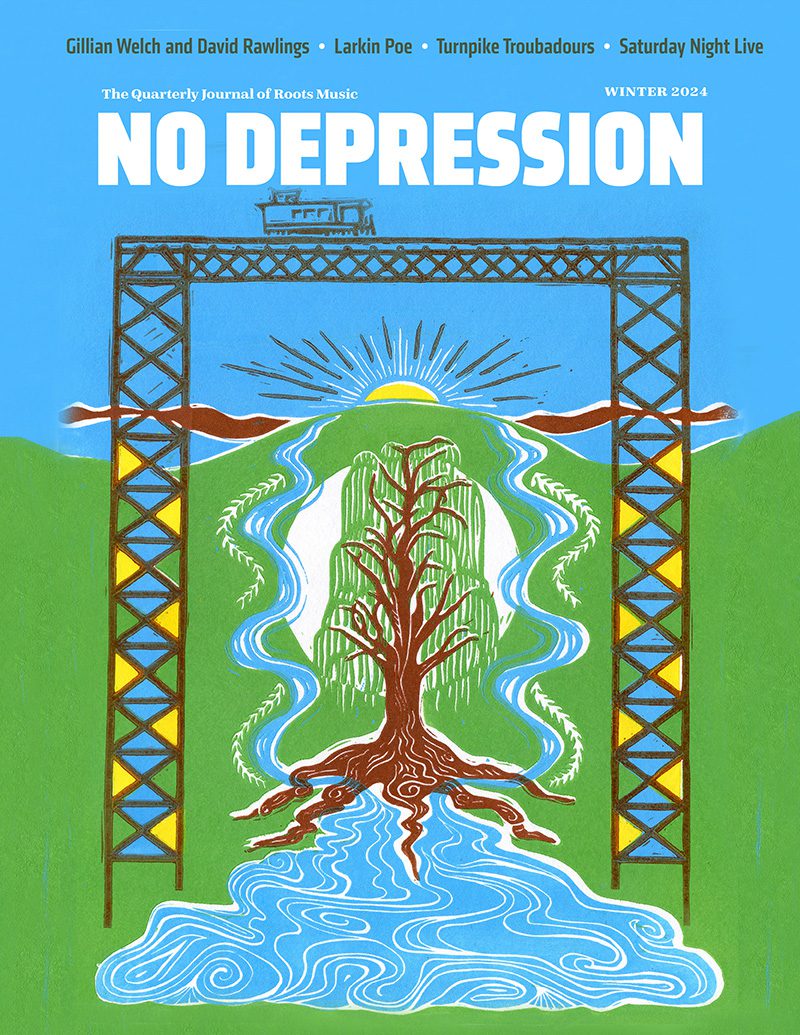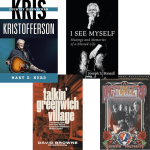THE READING ROOM: Rock’s Turning Point in 1973

In a very familiar scene from Cameron Crowe’s film Almost Famous, the rock critic Lester Bangs, played by Philip Seymour Hoffman, warns the aspiring young critic William Miller (Crowe’s alter ego): “I’m tellin’ you, you’re coming along at a very dangerous time for rock and roll. You got here just in time for the last gasp; the death rattle.” The year, of course, is 1973, and Bangs laments that the music industry “will ruin rock and roll.” In its own way, the movie’s soundtrack celebrates a time when rock and roll took deep breaths rather than gulping in the oxygen to remain on life support, supporting Bangs’ lament.
Surely there are plenty of folks who take Bangs’ words to heart, among them “classic rock” radio stations, whose playlists often contain no songs made after 1972. Yet, as music historian Andrew Grant Jackson points out in his sprawling and peripatetic 1973: Rock at the Crossroads (Thomas Dunne Books/St. Martin’s Press), the year 1973 was more a crossroads than a dead end. Jackson, who devoted an earlier book to 1965: The Most Revolutionary Year in Music (Thomas Dunne Books), expertly conducts us on a tour of the year that newly formed appendages grew out of the still-glowing ashes of rock’s burning body. He creates the scene for us, giving us a clue about where we’re headed: “If the cultural reformation of 1965-72 was a bomb, 1973 was the aftermath. The debris rained down. The sun streaked through the smoke onto the road ahead. Like everyone else, the musicians tried to process what had just happened and figure out what was next. They did so through a series of albums and singles that represent the zenith of classic rock. But in rock’s triumph lay its dissolution, for 1973 was the year radio programmers figured out how to commodify ‘album-oriented rock.’” The format soon segregated rock from the other genres that once spurred its evolution.
The free-form radio of the 1960s — where we might hear a Chuck Berry song played right before a Nina Simone tune or a John Coltrane sonic flight land just after the Jefferson Airplane had taken off — lapsed into a more sterile segregation of sound marked either by the spinning of album sides by one band or long dives into deep cuts off those or other albums.
By 1973 such deep dives introduced us to songs we might have otherwise avoided, but they also fostered a homogenous sound: Uriah Heep precedes Yes which is followed by Pink Floyd; of course, there are obvious differences, but at some level every Yes song sounds like every other Yes song. At the same time, such homogeneity also marked the rise of what later came to be called yacht rock, the soft rock that featured generally unremarkable music but that generated tunes that were memorable for a generation that couldn’t get them out of their heads. Yet, once you hear one Doobie Brothers song, or one Hall and Oates tune, you’ve heard them all.
Jackson looks far beyond this homogeneity and reveals, as the book’s subtitle has it, the intersections of several genres of music, as well as the various directions rock took during 1973. He divides the book into seasons — winter, spring, summer, autumn — and explores various weeks and months within those seasons and the music that fills them. For example, Autumn 1973 opens with the Who and their rock opera, Quadrophenia, and its recurrent musical theme: long live rock. He focuses not only on the music, but also the stories surrounding the band: the intraband fistfights and arrests for trashing hotel rooms. In August 1973, the Allman Brothers released Brothers and Sisters — their first album following the death of band members Duane Allman in 1971 and Berry Oakley in 1972 — which went to No. 1 on its release. At the same time, Gregg Allman was working on his first solo album, Laid Back (released in October 1973), a move that alienated him from the band. Another Southern rock band debuted in the summer of 1973: Lynyrd Skynryd’s (Pronounced ‘Lĕh-‘nérd ‘Skin-‘nérd) gave the world the rock anthem “Free Bird.”
Jackson launches into summer 1973 with a chapter on “honky-tonk heroes.” As he points out, “inspired by Kris Kristofferson, Willie Nelson and Waylon Jennings released the first outlaw country albums and thwart the repressive Nashville music industry. Nelson moves to Austin and brings hippies and rednecks together in his first annual Fourth of July Picnic.”
An energetic storyteller, Jackson regales with tales of the year in which rock and roll didn’t die but picked up its bags and traveled down several roads, absorbing new life in every village and town into which it came, and following those roads off into punk, rap, soul, country, and jazz. 1973: Rock at the Crossroads provides an illuminating look at rock’s turning point.




